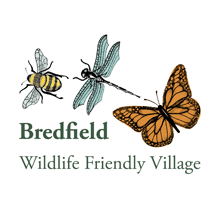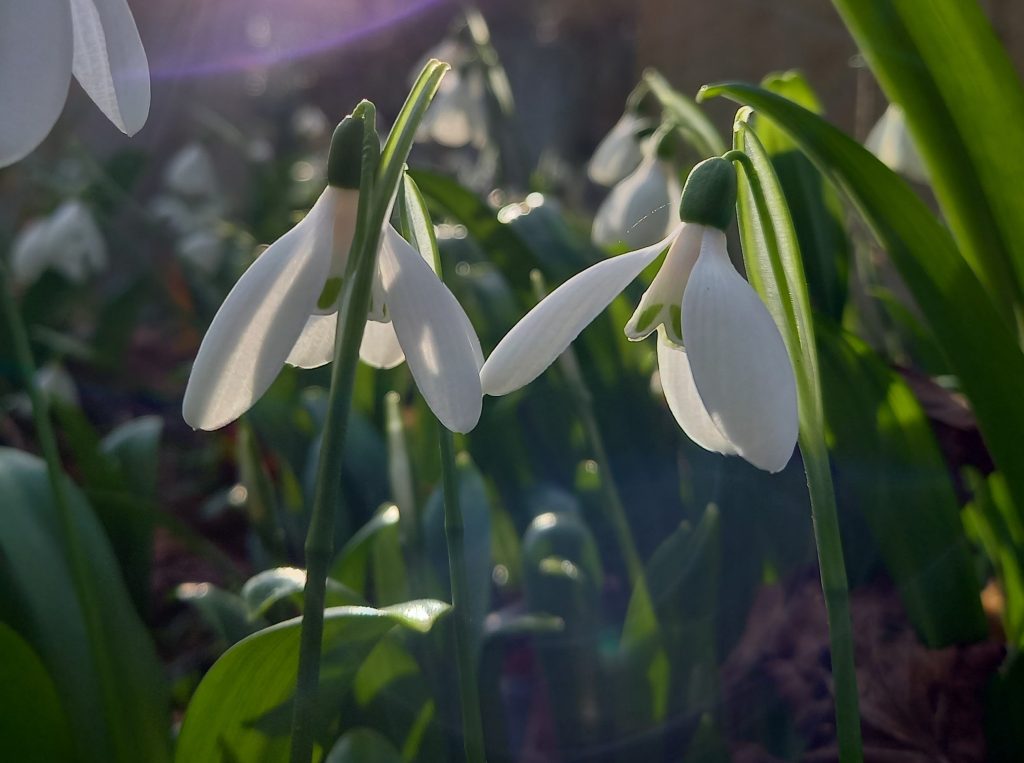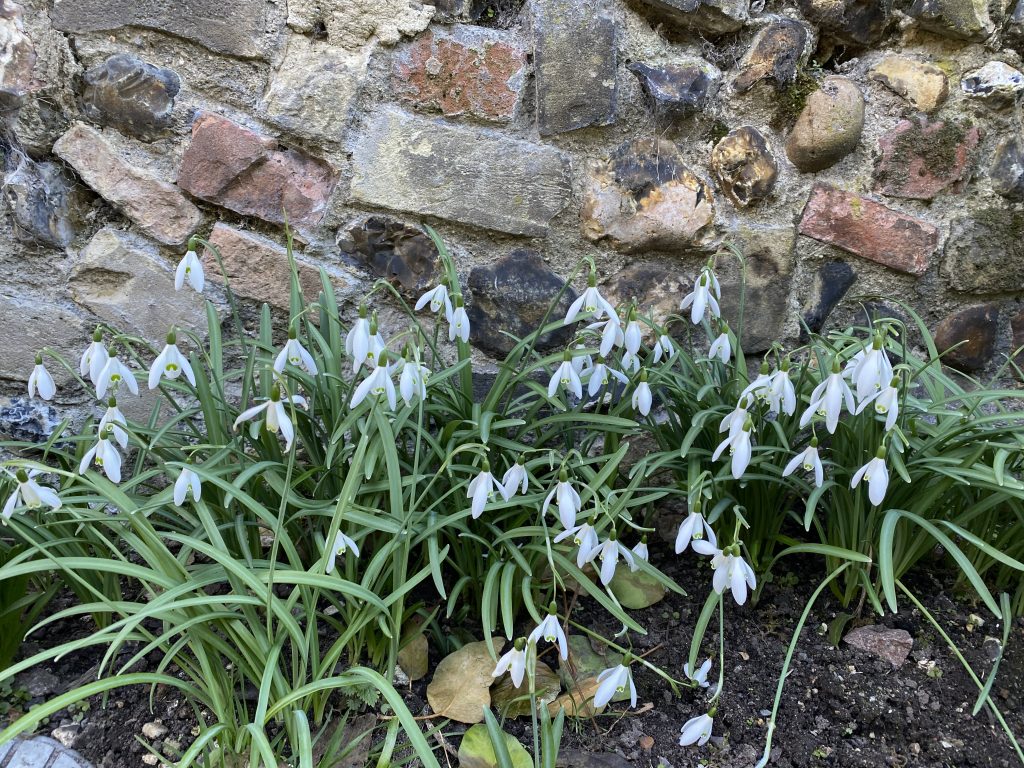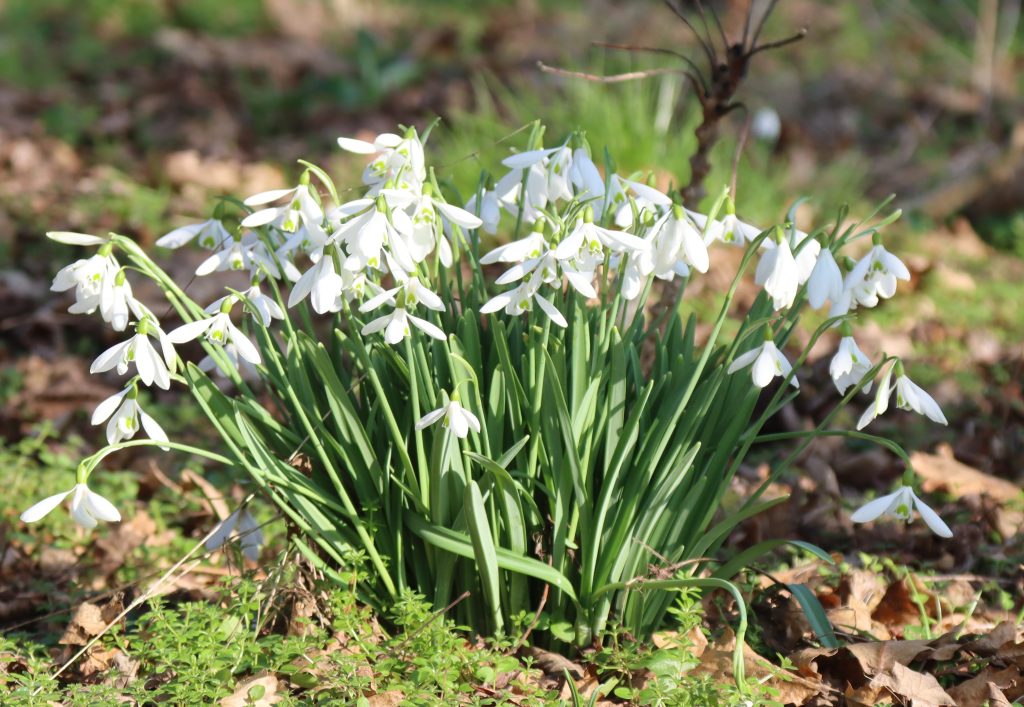A harbinger of Spring! Everyone knows the Snowdrop; everyone loves the Snowdrop. It’s not your Marmite kind of flower. What is perhaps less well-known is that bees and other insects love Snowdrops too. Lovely and wildlife-friendly – what’s not to like? Let’s have closer look at Snowdrops.
Snowdrops usually appear in January or February; though, with global warming, they can now be found even in December. They are hardy perennials capable of withstanding heavy frosts. Being one of the first flowers of the year, they are highly attractive to insects that emerge early. They can constitute a life-line for Buff-tailed Bumblebees, and you’ll also find Honey Bees, hoverflies and beetles attracted to them.
For humans, snowdrops have a more symbolic meaning: signaling that winter is coming to its end. However, it hasn’t always been a symbol of hope, for a single snowdrop was once viewed as sign of an impending death and, consequently, was not welcomed inside a house. Association with the Christian festival of Candlemas provided Snowdrops with the alternative name of Candlemas Bells. Snowdrops are not native to Britain and were not recorded in the wild until the late-18th century. Folklore has it that Snowdrops were named after earrings and not drops of snow.
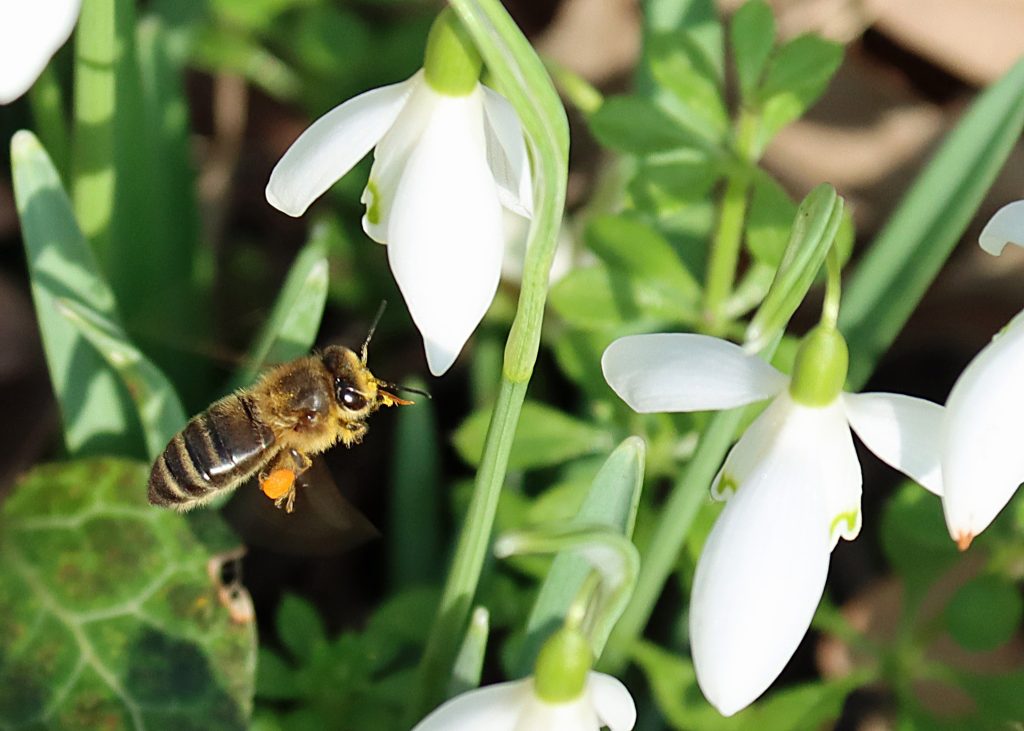
Honey Bee on Snowdrop 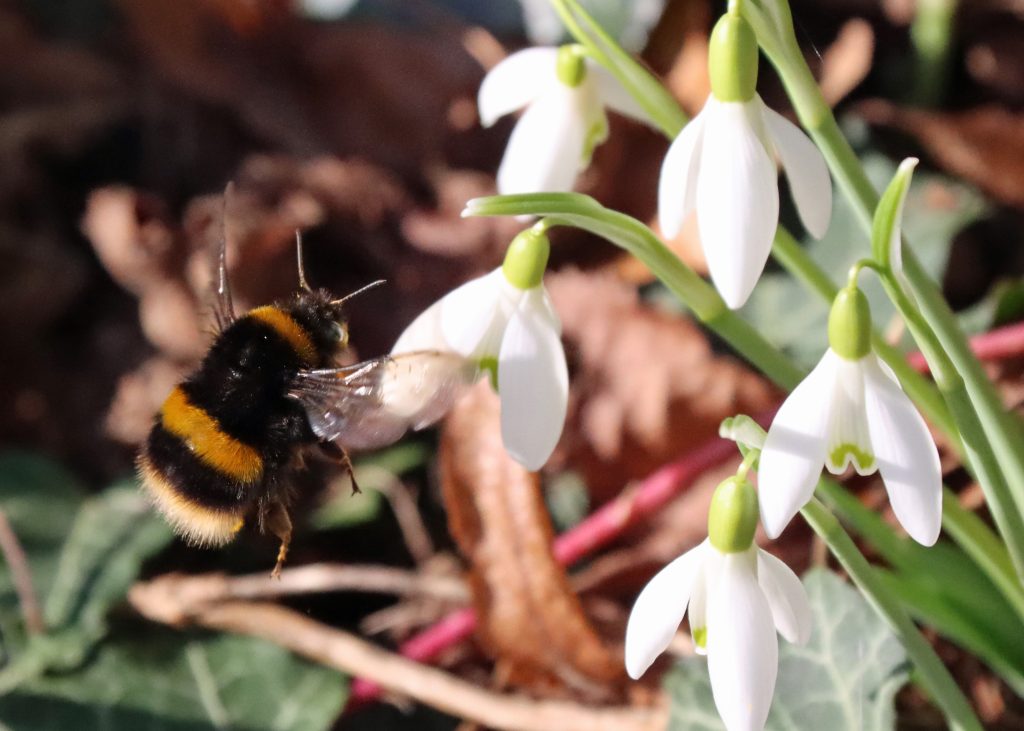
Buff-tailed Bumblebee on Snowdrop
The Snowdrop (Galanthus nivalis) has white bell-shaped flowers, but it lacks petals. The flowers are made-up of six flower segments known as tepals (an anagram of petals!). There are three outer tepals, which are white and pointed; and three inner tepals, which are smaller, notched and have a green pattern. In the middle of the flower is a central pistil and six anthers which contain the pollen sacs. You can see these features on the photograph below. What you can’t see is the nectary deep within the flower, which attracts and rewards visiting insects – especially bees.
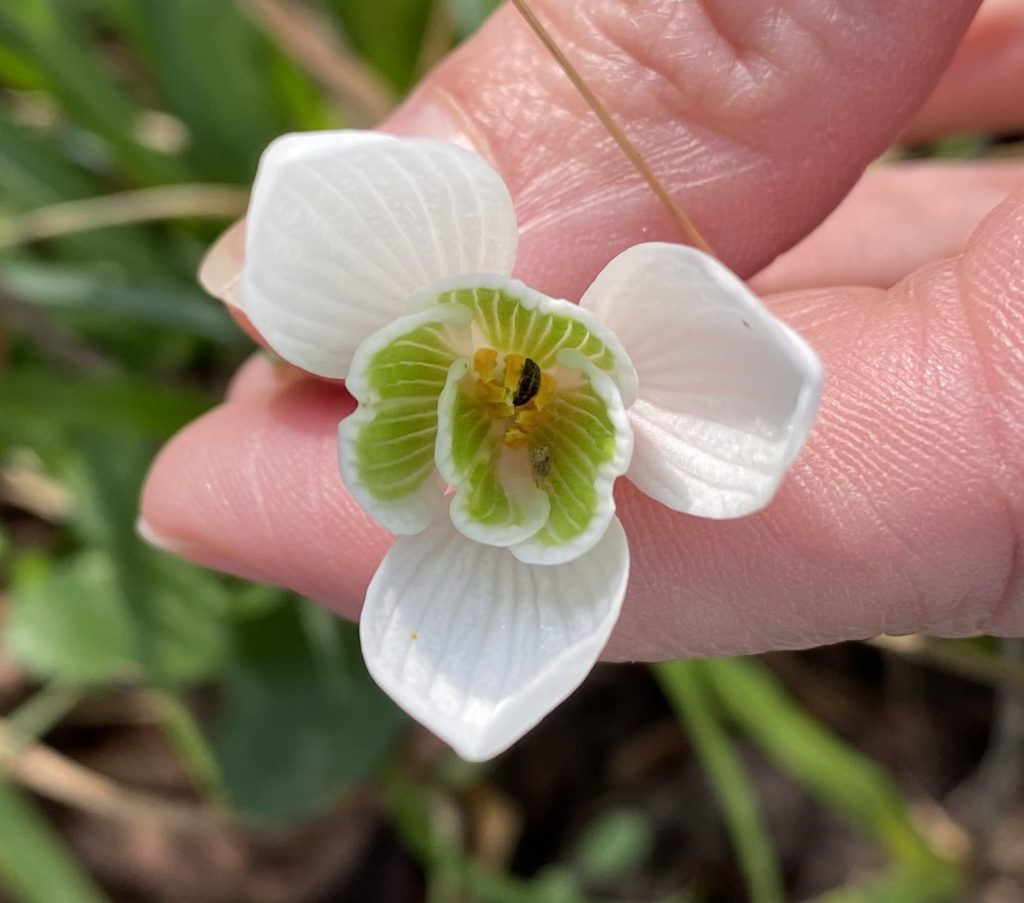
An insect’s view of a Snowdrop
Strangely, although Snowdrops attract pollenating insects, the plant does not rely on the insects for propagation. Snowdrops reproduce and spread by other means: firstly, their fruit produces seeds, which are spread by the wind, by animals that eat the seed heads, or by ants which carry them away; secondly, they spread through underground rhizomes which produce new shoots; and thirdly, they spread locally by producing daughter bulbs that grow off the parent bulb. Now you know why you can find clumps of plants spread across wide areas.
Snowdrops have their place in a wildlife-friendly garden. They are also welcome on verges, around graveyards and in other green spaces. (Whatever you do, don’t be tempted to dig-up and transplant snowdrops that you find in the wild. Not only is that not wildlife-friendly, it is actually illegal.) Snowdrops are a winner for both humans and wildlife. Celebrate them!
All photographs by Stewart and Jo Belfield
